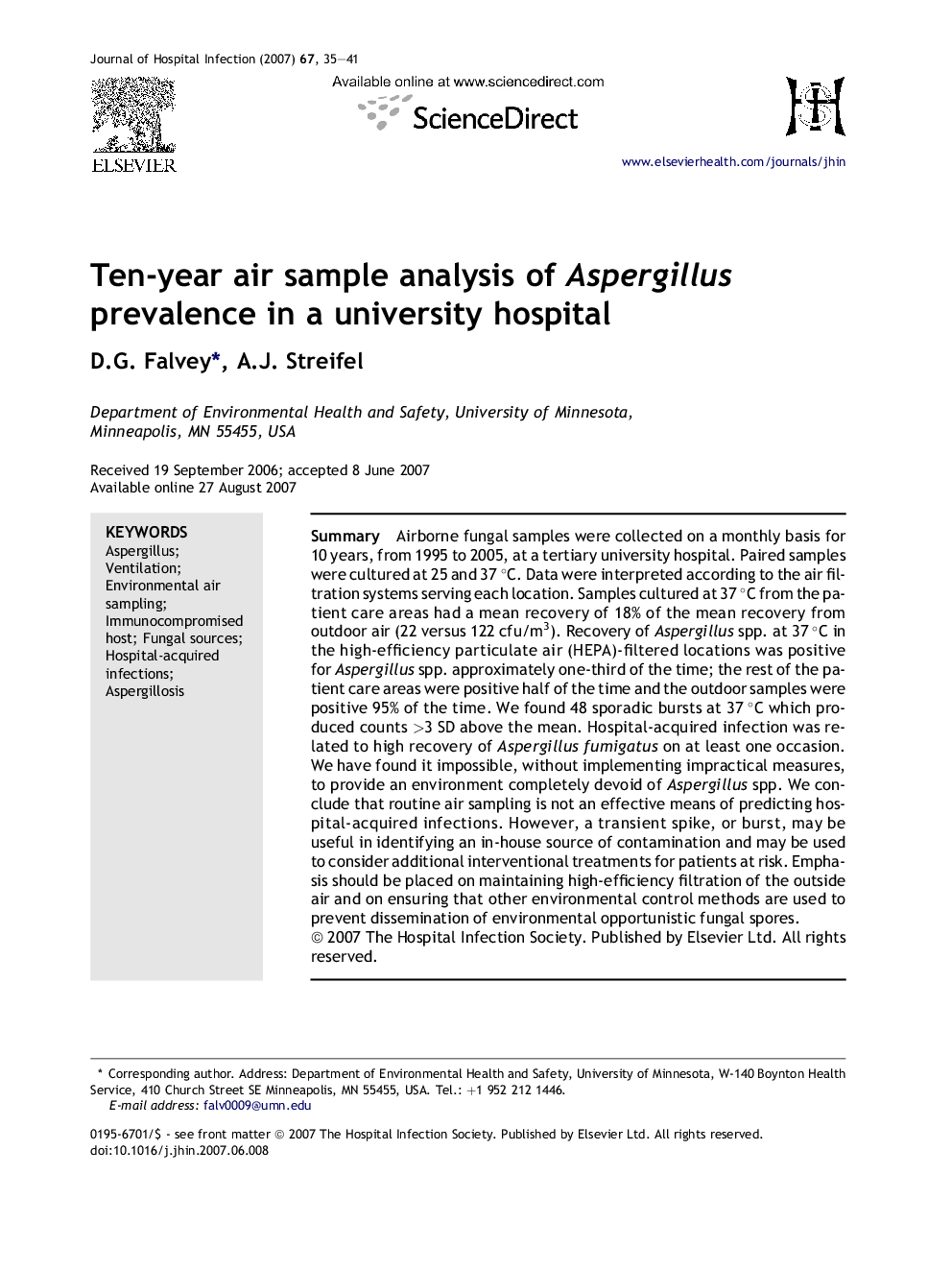| Article ID | Journal | Published Year | Pages | File Type |
|---|---|---|---|---|
| 3373544 | Journal of Hospital Infection | 2007 | 7 Pages |
SummaryAirborne fungal samples were collected on a monthly basis for 10 years, from 1995 to 2005, at a tertiary university hospital. Paired samples were cultured at 25 and 37 °C. Data were interpreted according to the air filtration systems serving each location. Samples cultured at 37 °C from the patient care areas had a mean recovery of 18% of the mean recovery from outdoor air (22 versus 122 cfu/m3). Recovery of Aspergillus spp. at 37 °C in the high-efficiency particulate air (HEPA)-filtered locations was positive for Aspergillus spp. approximately one-third of the time; the rest of the patient care areas were positive half of the time and the outdoor samples were positive 95% of the time. We found 48 sporadic bursts at 37 °C which produced counts >3 SD above the mean. Hospital-acquired infection was related to high recovery of Aspergillus fumigatus on at least one occasion. We have found it impossible, without implementing impractical measures, to provide an environment completely devoid of Aspergillus spp. We conclude that routine air sampling is not an effective means of predicting hospital-acquired infections. However, a transient spike, or burst, may be useful in identifying an in-house source of contamination and may be used to consider additional interventional treatments for patients at risk. Emphasis should be placed on maintaining high-efficiency filtration of the outside air and on ensuring that other environmental control methods are used to prevent dissemination of environmental opportunistic fungal spores.
